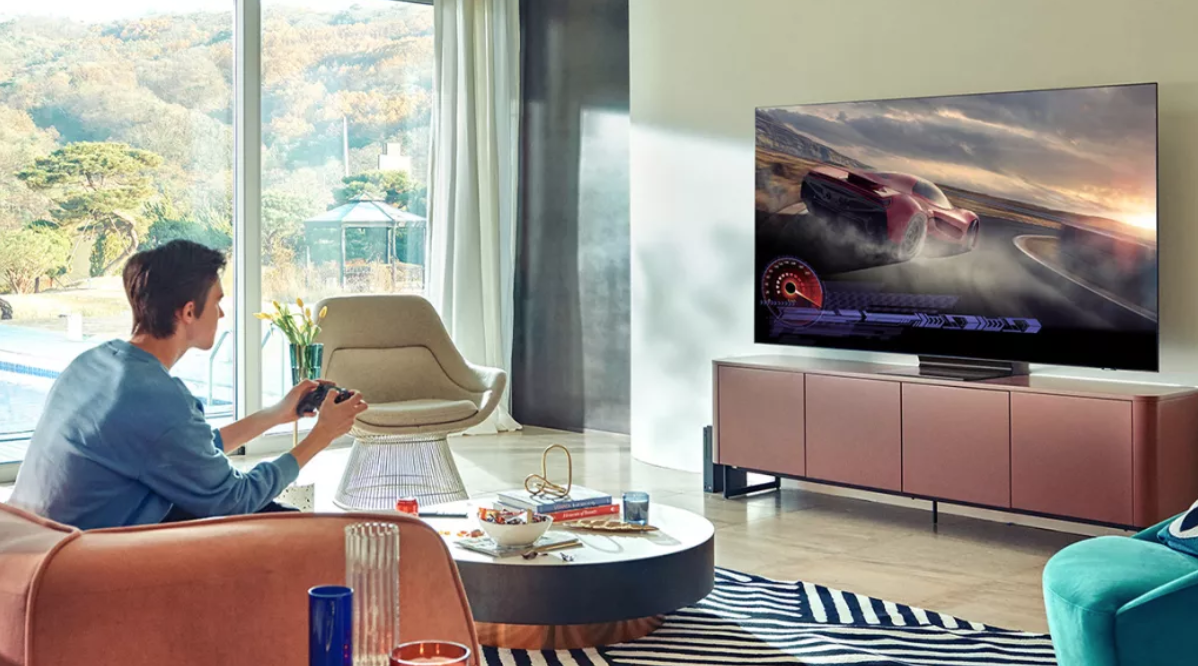Samsung's stretchable display shows off a new kind of 3D TV
Back in the third dimension

We’ve seen rollable TVs and rotating TVs and now we have stretchable TVs thanks to Samsung’s latest innovations on show at Global Tech Korea 2021. The company has been working on the tech for some time and has finally unveiled a 13-inch TV screen that can stretch and deform to match what’s being shown on screen.
As seen in the video below, the display can give itself texture to emphasize the movement of lava across the screen to express the image more realistically, giving a different sense of depth to what TV's previously badged as "3D" were capable of. According to Jeom-jae Kim, head of LG Display's Basic Technology Research Center who is also working on stretchable TVs, this design is only possible thanks to OLED technologies.
During a keynote speech on the topic, Kim said, “compared to LCD, which uses various and complex parts, OLED has a simple structure and can change shape naturally, it has strengths in terms of design and form factor.”
- Hands on: Samsung The Terrace review
- What are the best Samsung TVs?
- Samsung HW-Q950A review
Right now, this isn’t likely to be something you need (or even want) in your premium home cinema setup. As mentioned already the stretchable display size is only 13-inches, a massive downgrade from the 30-inch and bigger displays we’re used to, and we’re also not sure how well it would work with a visual that hasn’t been pre-prepared. How would a soap opera fare on stretchy TV, for instance?
As a proof of concept though, the stretchable display is impressive. At this smaller size, it might even mean we could see it implemented in a Samsung tablet or smartphone sometime in the next few years. We’ll just have to wait and see what Samsung has in store for us.
Analysis: Will stretchable TVs end up like 3D displays?
This isn’t the first time TVs that incorporate the third dimension have been touted as the future of home cinema. Barely a decade ago the same was said of more traditional 3D TVs that use glasses and display tricks to create a sense of depth.
Unfortunately, those 3D TVs were too niche and too expensive (a deadly combination for emerging new tech innovations) to ever be successful, and we’re worried stretchable TVs could face a similar fate. There could be a path forward for them though.
Get daily insight, inspiration and deals in your inbox
Sign up for breaking news, reviews, opinion, top tech deals, and more.
One key killer of 3D TVs was a lack of content to watch with them, with consumers required to buy expensive Blu-rays of select films that incorporated the tech. Stretchable TVs would likely need to develop a smart AI that can transform the display for large swathes of content rather than just exclusive experiences.
It might also be a smart move to incorporate the stretchable displays into handheld devices as an early place to test and improve the technology; we’re already seeing the same with folding displays. The smaller screens will be cheaper to manufacture and third-party app developers could be relied on to create experiences rather than Samsung and LG having to innovate on their own.
- Check out the best 4K TVs or best 8K TVs today

Hamish is a Senior Staff Writer for TechRadar and you’ll see his name appearing on articles across nearly every topic on the site from smart home deals to speaker reviews to graphics card news and everything in between. He uses his broad range of knowledge to help explain the latest gadgets and if they’re a must-buy or a fad fueled by hype. Though his specialty is writing about everything going on in the world of virtual reality and augmented reality.